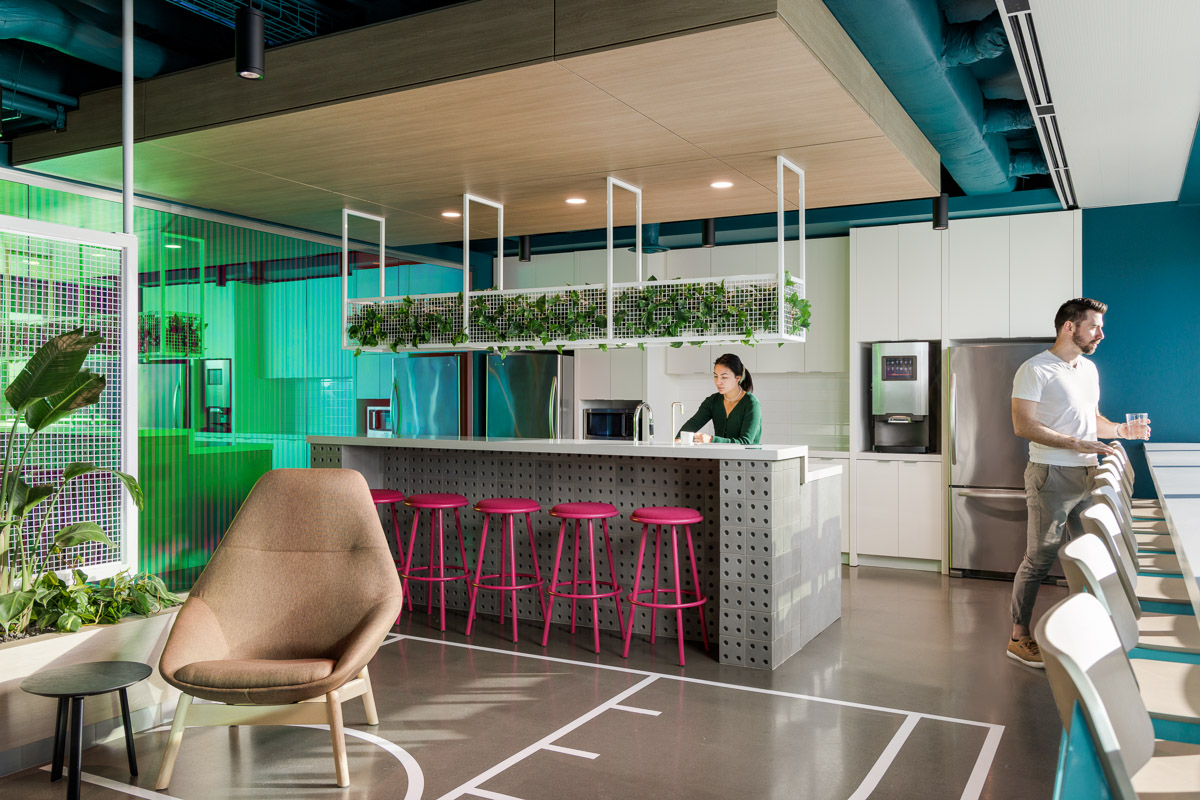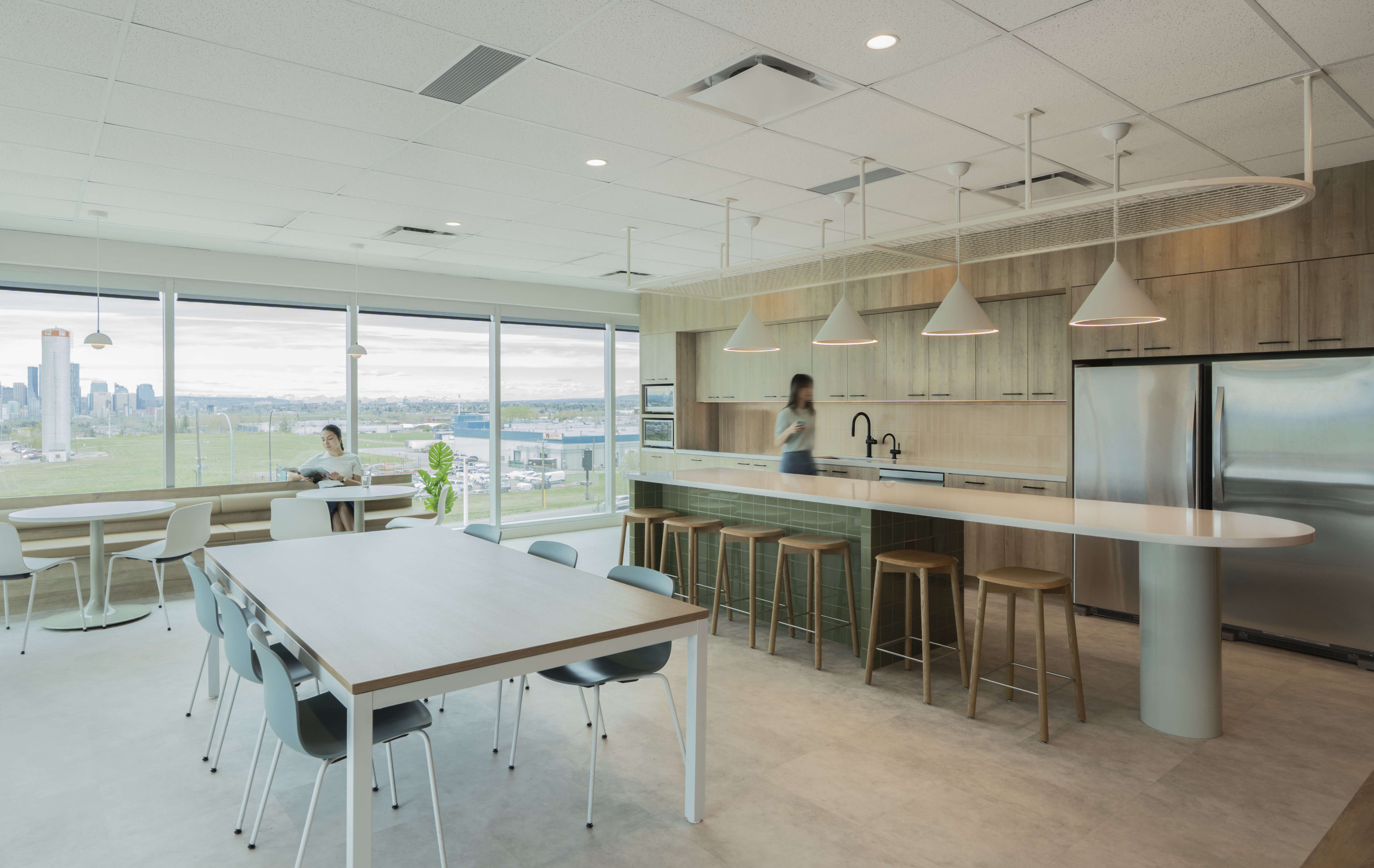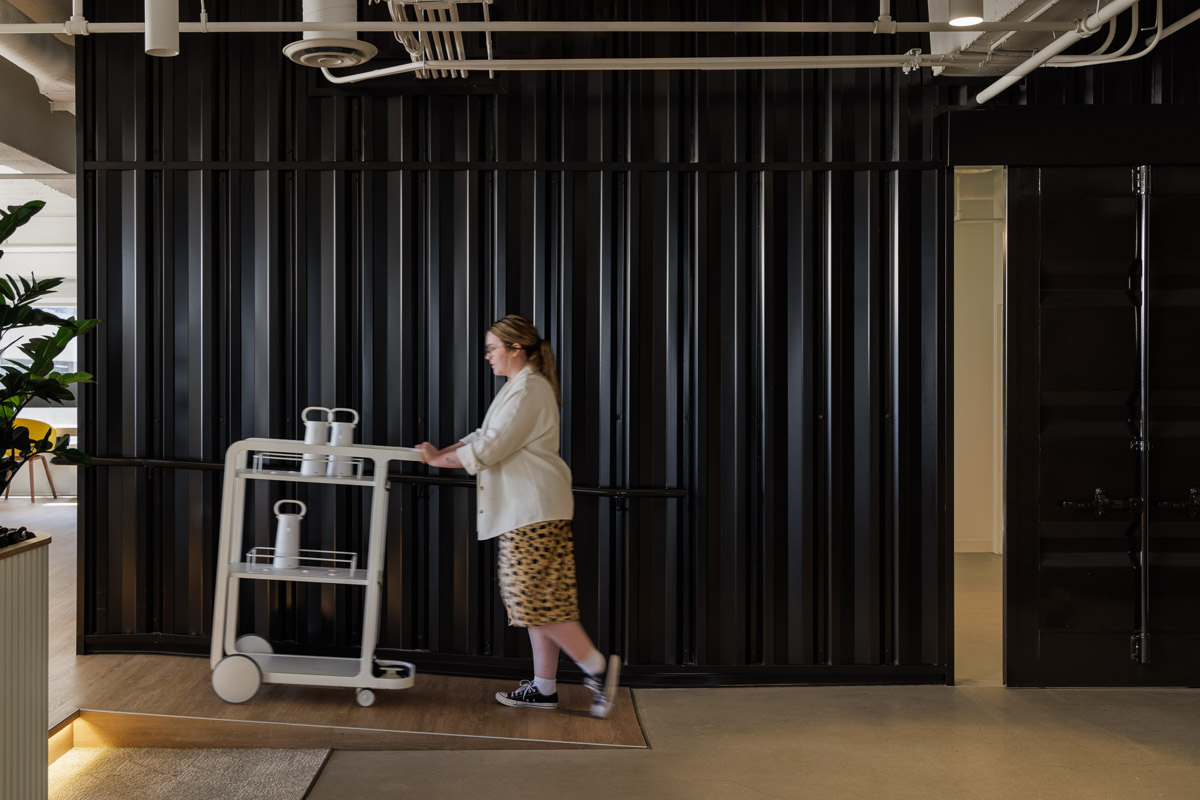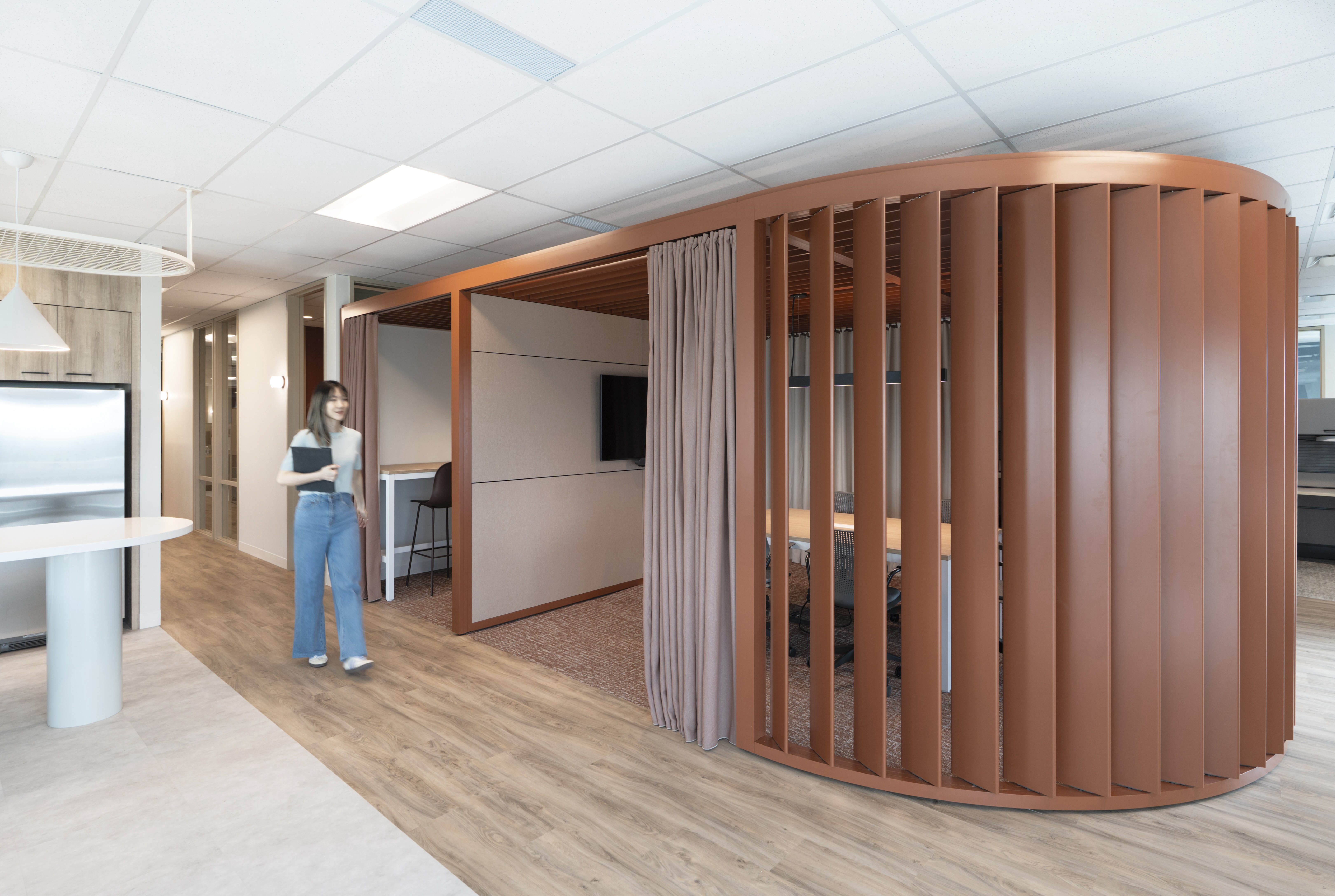Designing positivity into the workplace
Between email threads and back-to-back meetings, today’s employees are constantly moving through their workspaces, shifting between different needs and energy levels. Somewhere in all that movement, the workplace has quietly transformed into something more powerful than its physical components. It’s become a psychological territory that follows employees throughout the office. Every space now holds the potential to add stress to an already demanding workday or offer a moment of ease and positivity.

Between email threads and back-to-back meetings, today’s employees are constantly moving through their workspaces, shifting between different needs and energy levels. Somewhere in all that movement, the workplace has quietly transformed into something more powerful than its physical components. It’s become a psychological territory that follows employees throughout the office. Every space now holds the potential to add stress to an already demanding workday or offer a moment of ease and positivity.
For Holland Associate Holly Mark, understanding how people truly move and work within a space is the foundation of creating environments that feel effortlessly supportive. Her approach combines strategic foresight with genuine empathy, creating environments that seem to intuitively know what people need before they ask for it. In this blog post, Holly shares how to design for positivity in a way that removes everyday obstacles and creates spaces that promote connection and focus throughout the workday.
Design choices that build positivity
Designing for positivity doesn’t come down to a single gesture, it’s the accumulation of small, deliberate choices, each one building on the last to create environments where people naturally thrive. Here are the approaches Holly thinks make the greatest impact:

1. Function
The absence of friction is the foundation for genuine positivity. When a space functions seamlessly, it removes the small daily frustrations that accumulate and drain energy throughout the day. Good design fades into the background, allowing people to move through their environment without resistance, creating a sense of support and momentum. As Holly puts it, “Providing a sense of control and mastery fulfills a need for autonomy in the workplace.” That autonomy enables people to move with confidence and stay focused, supported by a space that intuitively aligns with their rhythms.
Function also lays the groundwork for authentic connection. “Community and interaction are critical elements for a positive existence,” she adds. “By creating spaces and hubs that promote interaction, we design positive connections between individuals.” Whether through clear pathways that invite conversation or flexible zones that foster spontaneous collaboration, thoughtful spatial planning anchors positivity in both flow and belonging.
.jpeg)
2. Lighting
"Maximizing natural light can boost mood and well-being," Holly says, noting that lighting is one of the most common challenges she hears from clients. Research that shows natural light increases alertness, visual comfort, and overall employee satisfaction (Kahaki et al., 2022). "By offering opportunities for exposure to natural light, you're stimulating serotonin production." Where natural light is limited, thoughtful design can still evoke its essence—through open layouts, reflective finishes, and warm lighting systems that shift throughout the day, creating spaces that feel connected to the natural world.
.jpeg)
3. Biophilia
Long before the built world existed, humans found ease in landscapes shaped by wood, stone, water, and vegetation. Those instincts still influence how we respond to a space today. Biophilic design taps into this primal connection, mimicking natural environments to create spaces that feel inherently comfortable and familiar. By incorporating raw materials and echoing nature's patterns, design can evoke a deeper sense of calm and clarity.
Research confirms what we intuitively know. Thoughtfully applied natural elements elevate mood and encourage feelings of contentment throughout the workday. Whether through natural wood finishes, stone accents, or integrated planters, these design choices create positive atmospheres that support well-being on an instinctive level (Weijie Zhong, 2021).

4. Material choice
Materials shape the sensory experience of a space—how it looks, feels, and even sounds. They influence our concentration and emotional response throughout the day. Thoughtful material selection helps regulate acoustics, support endurance, and create environments that feel grounded and calm. “None of this is new,” Holly notes. “Practices like smudging and Feng Shui date back to 4000 BC. Across cultures, people have long understood how our surroundings influence well-being.”
This instinctive understanding continues to guide modern design. Choosing matte or honed finishes over glossy ones, for example, helps reduce visual fatigue in bright, screen-dominated environments. Soft textures and natural tones support a more intuitive connection to space, inviting people to relax and reset. In every decision, the goal is to foster not just function, but lasting comfort.

5. Wellness
Traditional office environments often trap employees in cycles of stillness, leading to the familiar lunch break exit in search of energy and renewal. Often, it’s not the work itself, but the space that fails to support movement or mental reset throughout the day. “Learning and personal growth are standard aspirations,” Holly says. “By designing for personal progress, we provoke feelings of meaning and purpose for people within organizations.”
Designing wellness into a workplace means offering flexibility—blending traditional assigned seating with hotdesking or adaptable zones that allow people to move, shift posture, and choose how they work. “If personal involvement is inherent through space, a sense of purpose will stimulate the want and need to be part of the organization,” she adds. Clinically, movement and choice have been shown to reduce burnout, lower sick leave rates, and increase satisfaction and engagement during working hours (Rampisheh et al., 2022).

6. Inclusivity
“Authenticity and security—these are key terms for inclusion,” Holly explains. “We can foster positive associations by designing for trust and reliability.” This could mean integrating seamless ramp access for individuals who use wheelchairs, incorporating quiet zones or low-stimulation rooms for neurodivergent employees, or selecting furniture that supports a wide range of body types and mobility levels. It can also mean honouring cultural and spiritual practices by providing wellness rooms for prayer and meditation.
Beyond physical accommodations, inclusive design also shapes behaviour. Holly notes that, “Promoting positive values through design will impact behaviours within space. It contributes to the ethical responsibilities of individuals working together.” When people feel safe and respected in their environment, they’re more confident and empowered to contribute, making inclusivity not just a principle, but a performance driver.

Get in touch with us
At Holland, we approach workplace design by focusing on how people experience spaces. A thoughtfully designed workspace shapes how people show up, interact, and feel supported throughout their workday. By aligning organizational goals with human needs, we aim to create environments that work alongside people rather than against them.
Are you exploring how design can positively support your team? Get in touch with us today.

